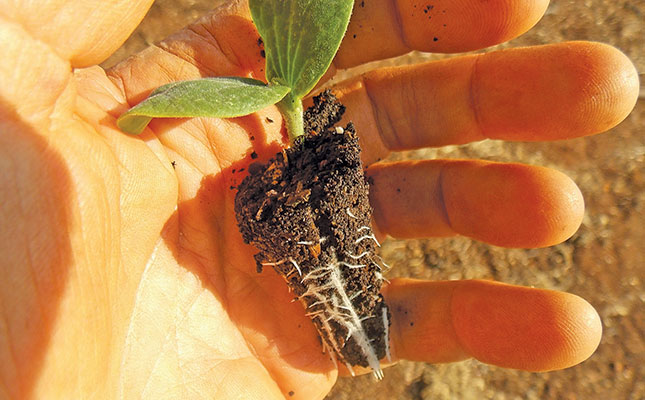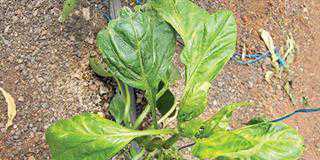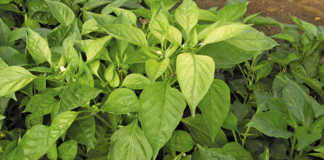
Photo: Bill Kerr
Cucurbit hybrids are now the norm. Because they are so much more expensive to produce, you’ll need to ensure that every seed counts and produces the maximum yield per hectare. For this reason, it will pay you to know the strengths and weaknesses of the cultivar before deciding on a planting strategy.
Chances are you’ll want to get your season going as soon as possible so that you can market your produce before your competitors and enjoy a price advantage. With the cold weather now seemingly behind them, many farmers think they can use cavity seedlings grown under protection and transplant them as soon as the frost danger has passed.
There are hazards to this approach. If the plants are of a transplantable size and the frost is not over, you will negate all of the potential advantage and have the expense of a seedling grower to pay.
Preparing for planting
As soon as the plants protrude from the seed trays, the roots ‘prune’ themselves (aerial pruning). The rapid regrowth potential is reduced in proportion to the level of advanced growth of the seedling. When you get to this stage, there is little ‘earliness advantage’ over direct planting of the seed in the soil.
The right stage to transplant the seedlings is as soon as they can be pulled with their root systems intact.
Aerial root pruning of cavity seedlings will set the plants back. Also, as the leaves grow larger in the trays, the area of the root system remains the same, so when transplanted in a more advanced state, the plant takes some time to rectify the balance.
In the nursery, the plants receive irrigation a couple of times a day. When the seedling has two dicotyledonous leaves and is just about to start pushing out true leaves, the roots will start to protrude from the tray. If the plant is transplanted at this stage, growth will continue unaffected.
Soaking the seed
There are also ways of gaining some advantage when direct seeding. Soak the seeds in warm water overnight, remove from the water, cover in a wet cloth and keep in a warm place.
Check the seeds regularly to see when the roots start to protrude. This is when the seeds are ready to plant.
Irrigate the land while the seeds are placed in the warm water. This will ensure that the soil is still moist when you plant the seeds, and you can get them up before another irrigation is needed.
This, of course, requires hand-planting. Herbicide can be applied before planting or you can carry out a very shallow cultivation.
If you irrigate two to three weeks before transplanting, weeds that are ready to germinate will have emerged just before planting. Apply another light irrigation and then spray paraquat at a rate of of 1ℓ/ha. This will burn off all the weeds and have no effect on the transplants or seed planted the next day.
Usually, the land will be clear of weeds for some time after planting, which is a big advantage.












